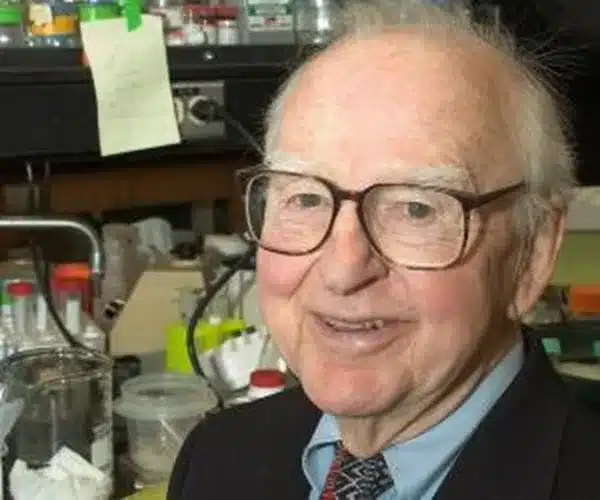Robert William Holley (28 January 1922 – 11 February 1993) was an American biochemist. He received the 1968 Nobel Prize in Physiology or Medicine along with Har Gobind Khorana and Marshall Warren Nirenberg.
Life and Career
He was born on 28 January 1922, in Urbana, Illinois. He completed his schooling at Urbana High School in 1938 and studied chemistry at the University of Illinois at Urbana-Champaign. He graduated in 1942 with a bachelor’s degree.
Holley went to Cornell University for his Ph.D. in organic chemistry under Professor Alfred T. Blomquist after graduating. During his Ph.D. studies, World War II broke out. He worked with Professor Vincent du Vigneaud at Cornell University Medical College from 1944 to 1946, where he helped synthesize penicillin for the first time. He earned his Ph.D. in 1947.
He worked at Washington State University as a postdoctoral fellow with Professor Carl M. Stevens right after he finished his Ph.D.
In his work at Washington State University, he characterized 2,4-dichloro phenoxy acetic acid metabolism in bean plants and identified auxins, which are plant hormones. He established a correlation between penicillin’s chemical reactivity and its spatial structure through his work on amides.
He came back to Cornell in 1948 and became an Assistant Professor of Organic Chemistry at the Geneva Experiment Station. He became an Associate Professor in 1950 and stayed there until 1957.
From 1955 to 1956, he served as a Guggenheim Memorial Fellow in the California Institute of Technology’s Division of Biology. He learned about RNA and protein synthesis during this sabbatical.
In 1958, Holley moved back to Ithaca, New York to work at the US Plant, Soil, and Nutrition Laboratory at Cornell University. He worked in the lab purifying and analyzing tRNA, t standing for transfer. Holley spent the next seven years working on the study.
In 1962, he became a professor of biochemistry at Cornell University. He became a full-time professor of Biochemistry and Molecular Biology two years later. From 1965 to 1966, he was chairman of the Department of Biochemistry.
He moved to La Jolla in 1966 as a National Science Foundation Postdoctoral Fellow at Salk Institute for Biological Studies and Scripps Clinic and Research Foundation. He was a Fellow until 1967.
He joined the Salk Institute as a Resident Fellow and an American Cancer Society Professor of Molecular Biology. He also became an adjunct professor at the University of California at San Diego.
He died on 11 February 1993, in Los Gatos, California.
Major Work
His most famous work was describing the structure of alanine transfer RNA. He was the first biochemist to discover the full sequence of an RNA molecule and alanine transfer RNA. During his career, he spent a lot of time at Cornell University doing research. Initially, he concentrated on tRNA isolation, and later on alanine tRNA structure and sequence.
Award
In 1968, he received the Nobel Prize in Physiology or Medicine for his discovery of the structure of alanine transfer RNA, linking DNA and protein synthesis.

